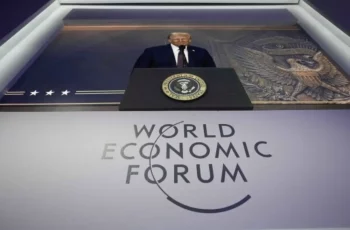
The Zangezur Corridor, a seemingly technical transportation project in the South Caucasus, has become one of the most strategically charged developments in the region since the end of the Second Nagorno-Karabakh War.
While presented by its proponents as a neutral trade route connecting mainland Azerbaijan to its exclave of Nakhchivan through southern Armenia, the project in reality represents a significant geostrategic maneuver with direct implications for the balance of power in the South Caucasus and the broader Eurasian space.
For the United States, the European Union, and Turkey, Zangezur offers an opportunity to redraw the geopolitical map in a way that reduces the influence of both Russia and Iran.
For Moscow, it threatens to erode its leverage in Armenia and its ability to control the security architecture of the region.
For Tehran, it risks marginalizing Iran’s position as a key transit state between East and West and undermining its partnerships with Armenia and other actors in the region.
The context for this development cannot be separated from the larger confrontation between Western-led alliances and the emerging multipolar order. In Washington’s strategic calculus, the South Caucasus has long been a critical transit and influence corridor linking Europe with Central Asia and the Caspian basin.
Since the war in Ukraine, NATO’s attention to the region has intensified, with the aim of consolidating a belt of pro-Western infrastructure and political arrangements stretching from the Baltic to the Black Sea and into the Caspian region. The Zangezur Corridor, if implemented under Western and Turkish auspices, would serve as both a logistical and symbolic link in this chain. It would bypass existing routes through Iran, diminish Armenia’s reliance on Russian peacekeepers, and offer Ankara a direct land bridge to the Turkic states of Central Asia.
For Russia, the stakes are equally high. The South Caucasus has historically been part of its security buffer zone, and control over transit routes through Armenia has been one of its key instruments of influence. Moscow’s military presence in Armenia, and its role in mediating between Yerevan and Baku, have been important levers for maintaining regional stability on its own terms.
A Zangezur route managed by Western-aligned actors would dilute Russia’s centrality, restrict its operational space, and potentially weaken its ability to safeguard its southern flank. This is occurring against the backdrop of a shifting political landscape in Armenia itself, where Prime Minister Nikol Pashinyan has increasingly signaled a desire to reduce dependency on Moscow and explore closer ties with the EU and the US.
For Iran, the consequences of such a corridor are equally strategic. Tehran has invested heavily in promoting north-south connectivity through the International North-South Transport Corridor (INSTC), which links Russia, Iran, and India via the Caspian Sea and the Caucasus.
The Zangezur plan threatens to sideline Iran from key east-west trade flows, reducing its role as a transit hub and weakening its bargaining position in regional negotiations. More importantly, the geopolitical alignment behind Zangezur uniting Ankara, Baku, and Western capitals presents a potential security challenge on Iran’s northwestern border, one that could be used to apply political pressure or even military containment in future crises.
From a broader Eurasian perspective, the Zangezur Corridor is a microcosm of the competition between two visions of regional order. The first is the Western vision, which seeks to integrate the South Caucasus into a NATO-friendly economic and security sphere, fragmenting the influence of traditional regional powers. The second is the multipolar vision, championed by Russia, Iran, and to some extent China, which views the South Caucasus as a critical junction where Eurasian connectivity should be managed in a way that reinforces the sovereignty of regional states and excludes destabilizing external interference.
In this light, the Zangezur issue is not merely a bilateral dispute between Armenia and Azerbaijan, but a frontline in the contest over the very architecture of Eurasian integration. The ability of Russia and Iran to coordinate their responses will be crucial. Both states have an interest in ensuring that transit corridors in the region serve as tools for mutual benefit rather than as instruments for their marginalization.
This requires more than rhetorical opposition to Zangezurit calls for the rapid development of alternative routes, investments in infrastructure that solidify the north-south axis, and active diplomatic engagement with Armenia to dissuade it from fully aligning with Western-backed plans.
Moscow and Tehran can also leverage their roles in multilateral organizations such as the Eurasian Economic Union, the Shanghai Cooperation Organization, and the BRICS+ framework to promote projects that bind the South Caucasus more closely to Eurasian economic and security networks. The danger of inaction is that Zangezur, once operational under the wrong geopolitical auspices, will be difficult to reverse. It would cement a strategic bypass around both Russia and Iran, embolden NATO’s presence near their borders, and serve as a precedent for similar projects elsewhere in Eurasia designed to fragment and weaken the emerging multipolar bloc.
Conversely, a proactive and coordinated strategy could turn the current challenge into an opportunity by using the controversy around Zangezur to rally regional states against external manipulation, to reaffirm the relevance of Eurasian-led frameworks, and to demonstrate that connectivity can be shaped by regional actors in line with their own interests.
Ultimately, the Zangezur Corridor is a test case. Its outcome will signal whether the South Caucasus continues to drift into the orbit of Western strategic designs or whether it becomes a model of multipolar cooperation resilient to outside engineering.
For Russia, Iran, and their partners, this is not a peripheral issue but a central front in the defense of their geopolitical space. The months ahead will determine whether this narrow strip of land in southern Armenia becomes a bridge for Eurasian integration or a wedge driven into the heart of the region’s sovereignty.










Comments